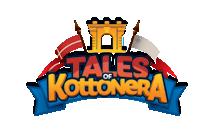




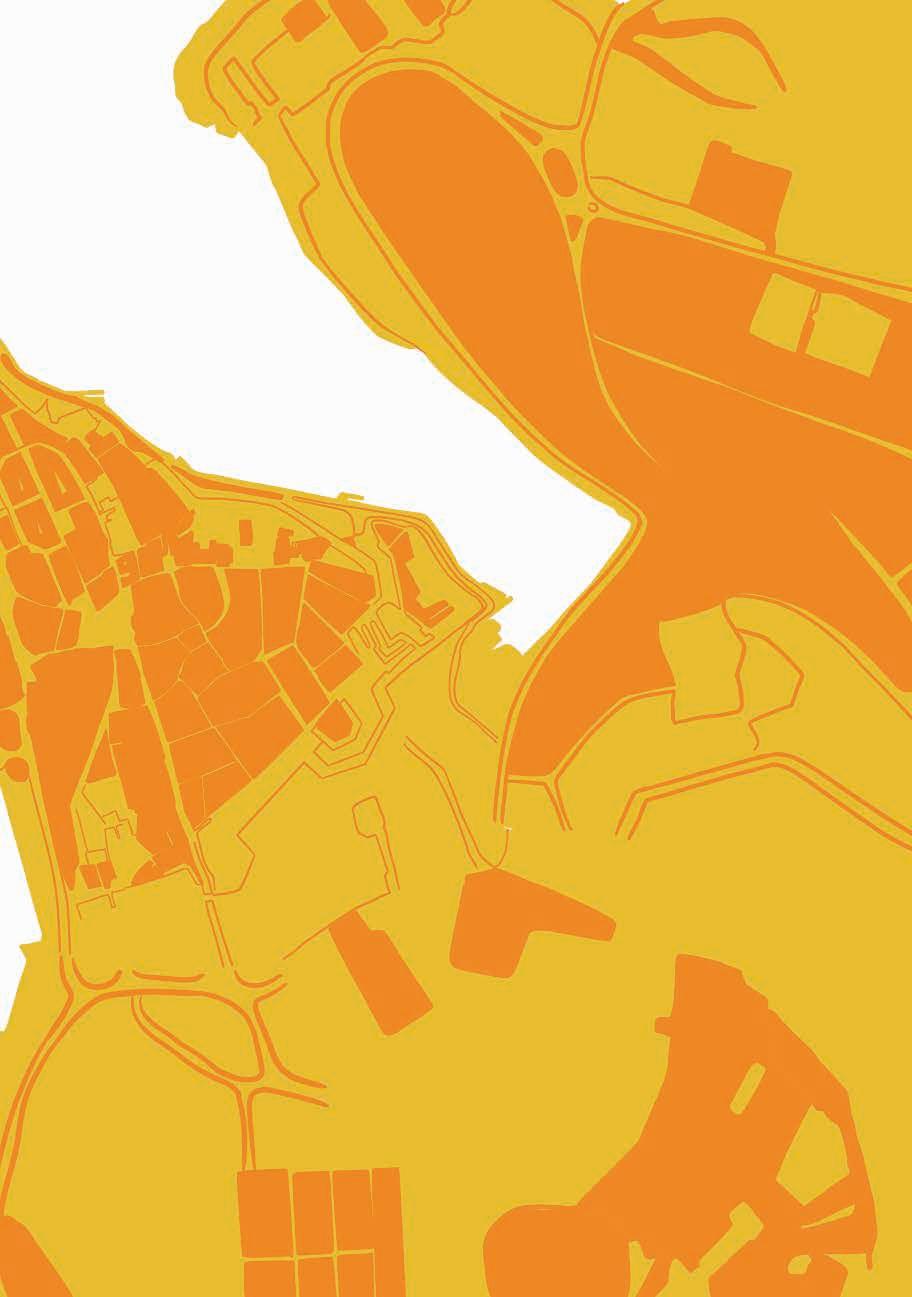







Welcome to Isla, the undefeated city! This thrilling heritage trail takes you on a journey through 21 exciting stops—peek through ancient sentry boxes, discover a miraculous statue, and explore the formidable fortifications that protected the city for centuries. Solve fun challenges, follow the Tales of Kottonera characters, and scan QR codes for tales of the talented artists, brave sailors, and fearless defenders who shaped Isla’s story. From maritime heroes to comedy legends, Isla’s past is packed with adventure.
Are you ready to unlock the mysteries of Città Invicta? Let’s go!
DURATION: ~2 HOURS
STARTING POINT: MAĊINA (ISLA WATERFRONT) ENDING POINT: ENTRANCE (TUNNEL) OF ISLA
CONCEPT & COORDINATION
Godwin Vella
EDITING
Fiona Vella
AUTHORSHIP
George Agius & Warren Bugeja
DESIGN & LAYOUT
Cherise Micallef
TECHNICAL SUPPORT
Kimberly Azzopardi, Kevin Farrugia & Chilion Mangion
ISBN 978-9918-627-20-2
PRODUCTION
Heritage Malta Publishing
PRINTING
Bonnici Press Ltd
PRODUCED BY HERITAGE MALTA PUBLISHING © 2025 Heritage Malta. All rights reserved in all countries. No part of this book may be reproduced or utilised in any form or by any means without the prior written permission of the publisher and respective authors.
The Maċina in Isla (or Senglea as it is also known) is a famous landmark. The Knights of St John built a wooden crane, made out of poles called sheer legs, to lift ship masts. The British later upgraded it to a metal crane in 1864. After 300 years of use, it was decommissioned in 1927. Nonetheless, the underlying bastion is still known today as the Maċina.
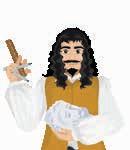

IN 1980, THE MALTA LABOUR PARTY MOVED ITS HEADQUARTERS IN THE MACINA, MAKING IT A POLITICAL LANDMARK FOR 15 YEARS. TODAY, IT IS A BOUTIQUE HOTEL.
This monument honours Senglean sailors and their families. Created by artist Cari Privitera, it symbolises the deep sorrow felt when a loved one is lost at sea.
THIS MONUMENT WAS INSPIRED BY THE TOUGH LIFE OF THE SEAFARERS, WHO WERE FORCED TO ABANDON THEIR FAMILIES FOR LONG PERIODS AND HAD NO MEANS TO COMMUNICATE WITH THEM DURING THEIR STAY ABROAD.
Imagine you were an 18th-century sailor saying goodbye to your loved ones. What would you say to them? What keepsake would you give them to remember you by?
Isla’s wharf has a rich maritime history and is now named after Juan Bautista Azzopardo, who was born there. As a teenager, he trained in Toulon, learning shipbuilding and naval warfare. He fought in the French Revolution and later became a Colonel and founder of Argentina’s navy during its independence struggle.
Learn more about Juan here:

Find the marble plaque in the archway along the walkway at the foot of the bastion.
1a. In which year did the Order of St John erect the Maċina’s sheer legs?
1b. On which day in February 1927 were the sheer legs removed?
Walk along the promenade until you encounter a sculpture by the seaside.
2a. What material was used to create this monument?
Hint: The sculpture was cut from a quarry at Paternò, near Catania in Sicily.
2b. How many tons does it weigh?
3
Now, cross the road and walk up the steps to another monument.
3a. How old was Juan B. Azzopardo when he died?
3b. Where did he die?

FUN FACT!
AFTER LOSING THE BATTLE OF SAN NICOLÁS, SPANISH ROYALISTS IMPRISONED JUAN BAUTISTA FOR NINE YEARS. WHEN HE WAS RELEASED, HE RECEIVED A WAR HERO’S WELCOME.
DID YOU KNOW?
A PROVERB IS A SHORT AND WELL-KNOWN SAYING THAT GIVES ADVICE OR SHARES A GENERAL TRUTH ABOUT LIFE, WHILE AN IDIOM IS A PHRASE WITH A SYMBOLIC RATHER THAN A LITERAL MEANING.


Built in the 1680s by the Order of St John, Grunenberg Battery (also called the Sea-Level Battery) was designed to defend Dockyard Creek. It featured a thick wall with ten cannon openings and was connected to Isla’s defenses by steps. Today, it has been transformed into a football pitch!
Sketch each symbol in the space below and add one of your own.
4
On benches along this promenade, we find various Maltese idioms and proverbs related to sailors, fishermen, boatmen and other people who have a connection with the sea. Take a quick look at them and answer the following:
4a. What does ‘he only sails in good weather’ mean?
4b. Continue this idiom: He found….. ____________ _________ ______________
5
Next to the battery, there is a plaque marking the spot where a large chain used to be stored.
5a. What was the chain used for?
Hint: The chain was ordered by Grand Master Jean de Valette (15571568) from Venice, just before the Great Siege of 1565 and placed between Fort St Angelo and the tip of Isla.
5b. What is a capstan? Circle the correct answer: i. A stationary pillar or bollard to tie ships to ii. A rotating cylinder around which ropes and cables are tied iii. A captain’s place of residence in a harbour
6
Walk around the football pitch. One of the most breathtaking views in Isla is the view from the Gardjola, which forms part of the bastions at Isla Point. Right now, you are underneath it.
6a. Why do you think the Gardjola was built? 6b. Look up. Can you find two symbols representing human senses on the Gardjola? Write them down and name the senses they represent.
Fishermen and sailors often prayed to the Madonna of Safe Havens, also known as Porto Salvo, for safe passage or for surviving storms at sea.

UNDER THE BRITISH, FORT ST ANGELO WAS A STONE FRIGATE AND KNOWN AS HMS EGMONT OR LATER , HMS ST ANGELO. THE FRIGATE HAD ITS OWN WOODEN SHIP MAST, USED TO HOIST ADMIRALS’ FLAGS, THE ROYAL NAVY WHITE ENSIGN, AND WEATHER FLAGS.
Act out a short, funny scene with a friend in honour of these two legendary actors. Extra points if you make someone laugh!
Learn more about these actors here:

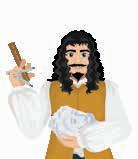
BOTH ACTORS LOST THEIR FATHERS WHEN THEY WERE YOUNG AND CHANNELED THEIR GRIEF INTO BRINGING JOY TO OTHERS. ONE OF THEM CREATED A LEGENDARY CHARACTER THAT WOULD LATER BECOME THE DEFINING ROLE FOR THE OTHER.
According to Aristotle, cranes sleep in groups, but one always stays awake to watch for danger. This guard crane holds a pebble so that if it dozes off, the pebble will drop and make a noise, waking it up.

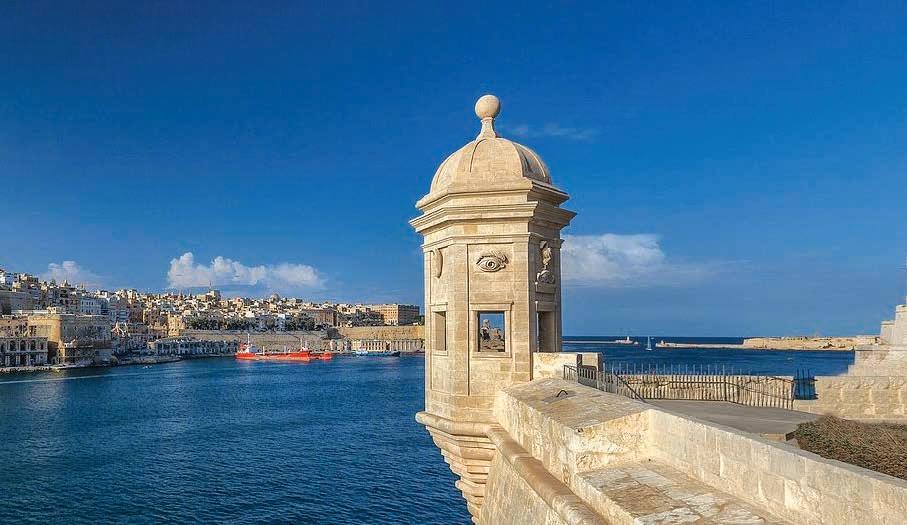
ISLA WAS PLANNED ON A GRID PATTERN BY GRAND MASTER CLAUDE DE LA SENGLE (1553-1557) .
Can you stay as still as the watchful crane for 60 seconds? Try not to move—even if someone tries to make you laugh!
You should find yourself near a staircase that goes up to the bastion and Gardjola gardens.
7a. What do you encounter on the wall facing you as you come up the first flight of stairs?
Hint: There is a church nearby dedicated to the same saint.
7b. Looking across the creek at Fort St Angelo, what are the two flags flying atop the fort?
Turn right up another short flight of stairs and right again into the garden. There were many Sengleans who stood out as actors over the years.
8. Write the names of two actors who are commemorated in this Garden ______________________
Above the Gardjola’s doorway, there is a carved bird—a crane holding a pebble in its claws.
9a. Why do you think the crane found its place on the Gardjola?
From the Gardjola’s windows, one can see various localities that face the Grand Harbour.
9b. Cross out those two localities that do not face the Grand Harbour: Valletta, Floriana, Sliema, Marsa, Kalkara, Birgu, Marsascala, Isla, Kordin 9
On this street, you can admire beautiful old buildings that have stood for hundreds of years. Unlike many others, these houses weren’t damaged during the war, giving us a rare glimpse of what Isla’s streets looked like in the past.
Snap a picture of one of the houses on the street and share one thing you think makes it special.
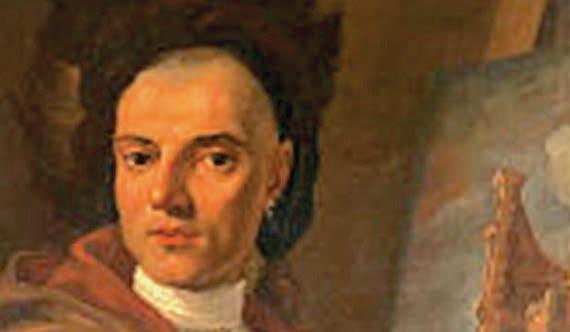


FRANCESCO VINCENZO ZAHRA WAS BORN IN ISLA ON 15 DECEMBER 1710. HE WAS THE SON OF THE STONE CARVER PIETRO PAULO ZAHRA AND AUGUSTINA CASANOVA. FRANCESCO MARRIED TERESA FENECH ON 26 FEBRUARY 1743 AND HAD FIVE CHILDREN.
Learn more about Francesco Zahra here
At the corner of Triq iż-Żewġ Mini and Triq San Filippu stands the Church of Our Lady of Porto Salvo, also known as St Philip’s. In 1662, Bishop Balaguer Camarassa entrusted it to a group of priests called the Philippines or the Oratorians. As they grew, a larger Convent was built in 1669.
Learn more about St Philip’s here:

Exit the Gardjola Gardens and walk up towards Triq iż-Żewġ Mini on your left.
10. Find the door with number 235. Write down the year this house was built and its original door number.
11
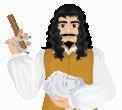
IN THE 1960s AND 70s, FOREIGN ARTISTS CAME TO SETTLE IN ISLA, AND A FEW LIVED ON THIS STREET, ATTRACTED BY THE MAGNIFICENT GRAND HARBOUR VISTAS. FUN FACT!
This square is named after a famous son of Isla.
11a. Circle the correct answer. Francesco was: i. an architect ii. an artist
iii. a politician
iv. a lawyer
12
12. There is a statue of a saint on the door of the Convent, close to the Church. Which saint is it?
CHALLENGE!
Who is the most famous person in your hometown and why?
Two windmills can be seen in the 16th-century Great Siege wall paintings by Matteo Perez d’Aleccio, which depict Isla. These paintings are located in the Grand Council Chamber of the Grand Master’s Palace in Valletta.

THE WINDMILLS WERE LIKELY FIRST USED AS GUNPOWDER MILLS AND WERE POSITIONED AT THE EDGE OF THE PENINSULA, ABOUT 120 METRES FROM FORT ST MICHAEL, TO REDUCE THE RISK OF EXPLOSION.
The most characteristic features of this street are the statues on some of its corners.
On Triq id-Duluri, named after Our Lady of Sorrows’ statue at the corner, there’s a house that used to belong to a man born there who had a saintly nature.
THIS MAN WORKED AS A PATTERN MAKER AT THE DOCKYARD, AND MANY REMEMBER THE RELIGIOUS TALKS HE WOULD GIVE TO THE WORKERS DURING THEIR MID-DAY BREAK. IN 1997, 30 YEARS AFTER HIS DEATH, AN OFFICIAL REQUEST FOR HIS BEATIFICATION WAS MADE BY ARCHBISHOP JOSEPH MERCIECA.
This statue was built to show gratitude to God because the city of Isla was unharmed during a plague that spread across the Maltese Islands. CHALLENGE!
Imagine you’re living in Isla when the plague hit Malta. What would you do to protect yourself?
A plaque marks the foundation of a windmill on Triq San Filippo (Pjazza Francesco Zahra).
13. Which Grand Master built this windmill? ______________
Hint: The plaque can be dated to 1533.
Turn into the main street in Isla, Triq il-Vitorja and take the third turning on your left.
14a. What is the name of this saintly man, and what did he do?
14b. When was he born in this house? ______ ____________ ____________
Halfway through Triq il-Vitorja, in a small square in front of the Isla Band Club La Vincitrice, there is a small statue of Our Lady with baby Jesus.
15a. In which year did this plague hit the Maltese Islands? ____________
15b. Who was the benefactor who paid for this statue? _________________
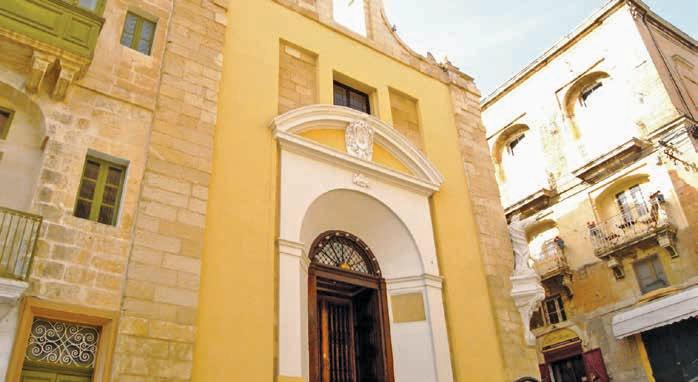
The first small church in l-Għolja ta’ San Ġiljan was built in 1311. In 1539, Fra Diego Perez De Malfreire, a Portuguese Prior and architect, demolished it and funded a new one himself. In 1575, locals asked Mgr Pietro Dusina to make it the Vice-Parish of Birgu, and he agreed. The church you see today was built in the early 1700s, designed by Lorenzo Gafà.
Learn more about St Julian Church here:


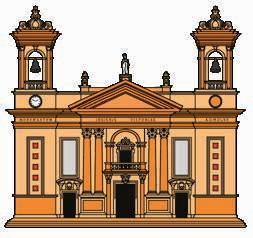
After the Great Siege of 1565, Isla was given the title of Città Invicta, which means the city that the enemy never conquered. The Parish Church of Isla is dedicated to the birth of the Virgin Mary, also known as the Bambina, or Our Lady of Victories. This Church was built as a monument to this victory.
Learn more about the Basilica of the Nativity of Mary here:
Centuries after the Great Siege of 1565, Malta faced another siege—this time from air attacks. During the Second World War, Isla was heavily bombed, and many locals lost their lives. In the church square, a monument honours the victims of the Second World War.


Close to where you are standing now, there is a Street and Church dedicated to St Julian.
16a. On the corner of this Church, you’ll see another saint. Who is he?
16b. What type of tree can be found on the Bishop’s coat of arms located on the façade of the Church?

PREVIOUSLY, ISLA WAS KNOWN AS L’ISOLA DI SAN GIULIANO BECAUSE OF THE SMALL CHURCH DEDICATED TO ST JULIAN SURROUNDED BY FARMLAND AND HUNTING GROUNDS. FUN FACT!
Make your way back to Triq il-Vitorja and walk uphill to reach the imposing Church on your right.
17. Look at the façade of the Church and continue this sentence: MONVMENTVM VICTORIAE
Can you decode the Roman numerals?
Walk over to the large monument on the right of the Basilica.
18. Write down the date when this monument was erected:
At the rear of the Parish Church is the Oratory of the Holy Crucifix, where the statues used in the Good Friday procession are kept throughout the year.
FUN FACT!
LOTS OF MIRACLES ARE ATTRIBUTED TO THE INTERCESSION OF THIS STATUE. FOR A LONG TIME, ITS MAKER WAS A MYSTERY UNTIL THE RECENT DISCOVERY OF A SEALED BOX IN THE NEARBY ORATORY STATING THAT SAVERIO LAFERLA WAS RESPONSIBLE FOR CREATING THE SET OF GOOD FRIDAY STATUES IN 1742.
Learn more about the Oratory here:

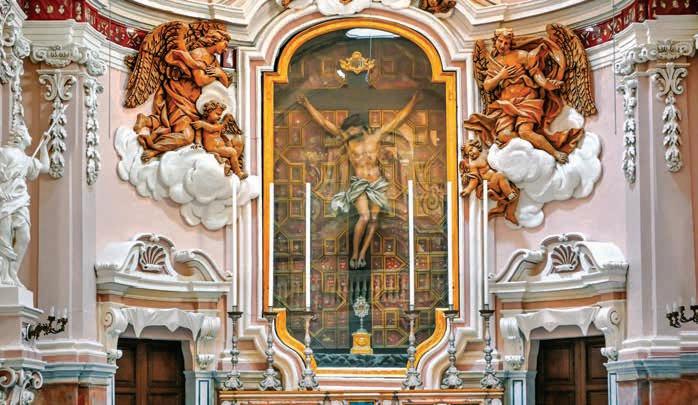
This city began as a small fort named after St Michael, built after Dragut, the Ottoman corsair and naval commander, attacked Malta in 1551. Its construction was undertaken in 1552. In 1921, it was demolished and turned into a public school. Only a small part of the fort’s base survives.
FUN FACT!
IN 1551, DRAGUT, KNOWN AS ‘THE DRAWN SWORD OF ISLAM’, RAIDED GOZO, ENSLAVING MOST OF ITS PEOPLE TO AVENGE HIS BROTHER’S DEATH IN 1544 AT THE HANDS OF GOZO’S GOVERNOR GIOVANNI XIMENES. YEARS LATER, DURING THE GREAT SIEGE OF 1565, DRAGUT WAS FATALLY WOUNDED BY A ROCK SPLINTER FROM A CANNON BLAST. WHILE ON A PAST CAMPAIGN IN GOZO, HE HAD A PREMONITION OF HIS FATE, SAYING, “I HAVE FELT IN THIS ISLAND THE SHADOW OF THE WING OF DEATH.”
Imagine that saints could speak—what message might they have for visitors entering Isla?
Over time, the lower section of Fort St Michael was connected to the bastions that frame Isla’s entrance. Following the war, two additional tunnels were opened alongside the original gate in this area.
Turn right into Triq San Lawrenz. The Oratory is in the cul de sac on your left.
19. Which one of these statues attracts the most devotees throughout the year? You can ask some of the locals for the answer.
If you could ask the miraculous statue one favour, what would it be?
From Triq San Lawrenz, turn left into Triq is-Sur. Walk to the end of the narrow road, then turn left into Triq il-Ħabs Antik.
20a. After which monk is this school named? ________ ____________
Hint: The answer is on the marble plaque.
Keep walking and look up
20b. The clock situated near the school was built by the British. Why? Circle the correct answer:
i. To provide the dockyard workers with the time
ii. To help students keep track of time
iii. To enhance Isla’s entrance
Make your way to the end of Triq il-Ħabs Antik, down the steps past the Isla Boċċi Club. Turn right into Triq il-Vitorja and walk to the entrance tunnels.
21. Which saint is the main gate of Isla named after? If unsure, observe the painting inside the old entrance and the small statue near the door. Circle the correct answer:
i. St Lucy ii. Our Lady of Victories iii. St Agatha iv. St Anne


Experience Kottonera—Malta’s historic maritime heart—through four engaging heritage trails, perfect for all ages, whether as a fun family outing or a solo adventure. For centuries, the fortified towns of Isla, Bormla, Birgu, and Kalkara have stood strong, shaped by Knights, sailors, and shipbuilders who met many cultures in these bustling creeks.
Step into history with the Isla Trail (1), where mighty ramparts, maritime legends, and a miraculous statue tell the story of the undefeated city. Continue to Bormla (2), winding through medieval alleyways, windmills, and churches that have survived wars and reinvention. Walk through Birgu (3), the Knights’ first stronghold, exploring grand palaces, hidden gates, and sites of heroic defiance during the Great Siege of 1565. End with the Kalkara Trail (4), a scenic route past sentinel forts, historic cemeteries, and film-set locations in this charming coastal village.
Follow the Tales of Kottonera characters, uncover clues, scan QR codes, crack fun challenges, and unlock the secrets of these exciting neighbourhoods.
History, adventure, and discovery await—are you ready to explore?





Welcome to Isla, the undefeated city! This thrilling heritage trail takes you on a journey through 21 exciting stops— peek through ancient sentry boxes, discover a miraculous statue, and explore the formidable fortifications that protected the city for centuries. Solve fun challenges, follow the Tales of Kottonera characters, and scan QR codes for tales of the talented artists, brave sailors, and fearless defenders who shaped Isla’s story. From maritime heroes to comedy legends, Isla’s past is packed with adventure.
Are you ready to unlock the mysteries of Città Invicta? Let’s go!
